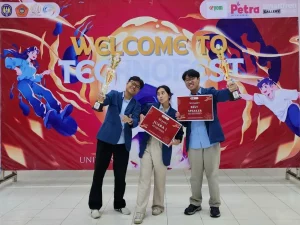The use of information technology is currently a necessity in working, both in private and government organizations. People and organizations are required to adapt to existing technological developments and to use them in at work. The use of information technology has also penetrated the Correctional Institution.
Some studies have put their focus on this area, a study by Senanayake et al. (2018) which examined the use of telemedicine, namely consultation and health examinations of prisoners through visual media between prisoners and doctors in different places. This research shows efficiency in terms of time and safety for the prisoners and the doctors themselves. Similar studies were conducted by Young & Patel (2014) who examined telemedicine in the USA related to prisoners with HIV disease and Gualano, et.al (2016) with the same focus but more to the practice of telemedicine in European Union prisons.
Another use of technology related to prisoners is the facility of video links from prisons that are connected to the courtroom showing positive results from a security perspective (McKay, 2015). Some other studies have put their attention on the use of video calls during visits in the USA (Tartaro, et.al, 2017, McLeod, et. al, 2018, Martin, 2016).
The current use of information technology in the correctional sector has seen its benefits especially during the Covid-19 Pandemic. In Indonesia, to avoid the spread of Covid-19, physical visiting services have been changed to virtual visiting services via video calls, trials are conducted via video conferencing facilities and several office activities are conducted virtually through the zoom application. This is not only done in Indonesia but also by many countries in the world, such as Australia, America and European countries.
According to Castellacci & Tveito (2018) who examine internet use on job satisfaction, the use of information technology has shown several results, first, it provides opportunities for users to access data and information like never before. Second, internet technology has also led to the emergence of new activities and services, as well as the emergence of new jobs as new opportunities for skilled workers. Third, the use of Internet leads to a time-saving effect, allowing employees to perform time-consuming and repetitive tasks in a more efficient manner than before. Finally, the Internet enables long-distance communication among workers through a variety of inexpensive yet powerful tools, which provide unprecedented opportunities for internal communication, and facilitate the flow of information between managers and employees.
The use of information technology requires employees to quickly adapt to the technology, and this of course will have different effects on employees. Some employees will perceive them as opportunities and are more likely to use them as active working tools to improve performance and job satisfaction (Bala & Venkatesh, 2016). However, there are also those who need time to adapt in the workplace trying to understand and manage these changes (Beaudry & Pinsonneault, 2005).
This condition indicates that when an organization decides to use information technology to improve its performance, the human resource factor becomes an important element to develop. Apart from being obtained through the recruitment process, the development of training for existing employees is expected to be able to improve employee competence in the use of information technology, especially for those who are in direct contact with information technology-based services. Training development is also a form of organizational investment that is expected to serve organizational goals (Wick: 2020).
This phenomenon is interesting to discuss further, especially in the current conditions of the Covid-19 Pandemic where there are challenges related to information technology itself and the readiness of human resources who carry it out. Research related to the use of information technology specifically in correctional institutions is still scarce, especially in the field of Human Resource Management, so this research is expected to be the first step for subsequent studies.
Use of information technology for correctional services carried out by the Directorate General of Corrections of the Ministry of Law and Human Rights of the Republic of Indonesia is held in order to create quality service products. To support this, the development of training for officers related to the use of information technology is carried out so that they can optimize existing information technology. The use of correctional service information technology, supported by trained officers, has a positive impact on service quality and the level of job satisfaction of officers.
The data show that correctional service information technology has accelerated business processes from months to days, is transparent and accountable. This study supports previous studies which show that service quality will increase job satisfaction.
However, this study shows that the role of officers in the use of information technology has not been optimally utilized. This can be seen from the absence of special recruitment of officers with a background in information technology education and the lack of training held, even though the need for competent officers in this field is urgently needed. This research was conducted in a Covid-19 pandemic, which greatly affects the use of information technology in correctional services. Organizations are expected to quickly adapt and innovate in the use of information technology during a pandemic
Author: Anis Eliyana
Details of this research can be viewed at:
http://www.sysrevpharm.org/index.php?fulltxt=135379&fulltxtj=196&fulltxtp=196-1600204130.pdf









